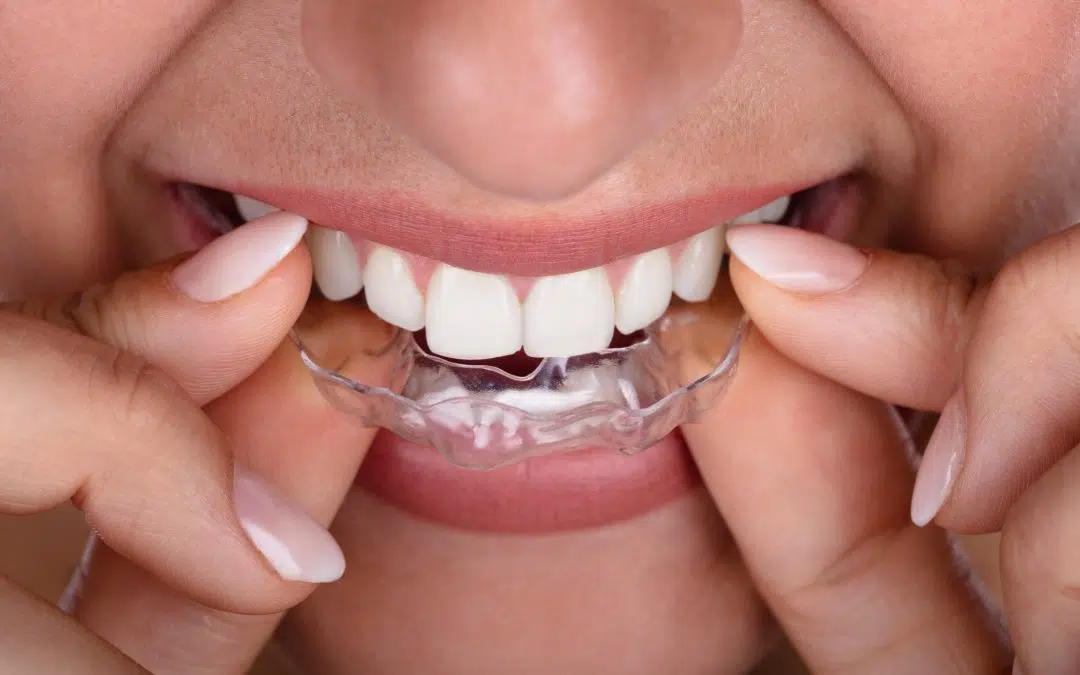Not everyone is born with a perfectly straight smile, but just about anyone can achieve the beautiful smile they want thanks to orthodontic treatment. Traditional metal braces and clear aligners are two popular orthodontic treatments used to straighten teeth gradually, but because both options yield similar results, it can be hard to know which method is best.
Here’s everything you need to know to decide between clear aligners and metal braces.
What is Orthodontic Treatment?
Orthodontic treatment is a way of straightening or moving teeth to improve the appearance of the teeth and how they work.
What are Clear Aligners?
Clear aligners are an orthodontic treatment that uses clear trays instead of braces to move your teeth gently but constantly to the desired alignment. The aligners are made from clear plastic, so they are nearly invisible and fit snugly over your teeth.
Unlike metal braces, the aligners apply pressure to all the teeth together, as opposed to each tooth, as braces do. The aligners should be worn for 22 to 23 hours a day for the best results.
Clear Aligner Treatment
Clear aligners are a type of orthodontic treatment that is virtually invisible and removable. The main differences between clear aligners and braces are that they are discreet in appearance, and more comfortable to wear compared to the metal brackets. This effective cosmetic dental treatment can treat several conditions, including:
- Overbite
- Underbite
- Crowded teeth
- Gapped teeth
- Misaligned teeth
- Open bite
Pros
- Virtually invisible– the clear aligner trays are hardly noticeable so you can straighten your teeth discreetly. They can also be removed for special occasions.
- No food restrictions– you can remove the trays when eating and enjoy all your favorite foods.
- More comfortable– clear aligners fit flush against teeth and don’t cause the cuts or discomfort that braces can.
- Better oral hygiene– since they are removable, clear aligners make it easy to maintain proper oral hygiene during your treatment.
- Shorter treatment time– treatment length for clear aligner treatment ranges from 6 months to 2 years, depending on the individual case.
Cons
- Not suitable for complex orthodontic corrections: If you have extreme overcrowding, very small teeth, severe tooth rotations, severe bite issues, or skeletal malocclusion, which requires the intervention of traditional braces and possible surgical intervention, clear aligner treatment may not be ideal.
- More tooth brushing: You should brush your teeth after eating or drinking. Because most people snack throughout the day, daily brushing time may double or triple when using clear aligners.
- Commitment: Clear aligner treatment’s effectiveness relies on the patient’s lifestyle and how well they commit to wearing, and caring for their teeth and aligners. Not wearing the aligners as recommended will result in longer treatment times.
Metal Braces
Metal braces are the original form of orthodontic treatment and have been around for centuries. They shift your teeth into their desired position safely and effectively, using small brackets bonded to each tooth, connected by a metal wire and rubber bands.
Pros
- Effective for severe or complex cases: Braces are a universal treatment that works for minor to complex issues.
- More affordable: Metal braces are usually more cost-effective than clear aligners, especially in more complex cases. The cost of your clear aligners depends on the length of your treatment and how many sets of trays you’ll need to complete it. The longer your treatment time is, the more you’ll pay for clear aligners.
Cons
- Noticeable metal appliance – though modern metal braces are smaller and less noticeable than in the past, they’re nowhere close to being as discreet as clear aligners.
- Food restrictions – eating chewy, sticky, or hard foods with traditional braces in your mouth can be challenging, as food particles often get stuck in the metal or can even break the brackets, prolonging the duration of your treatment.
- It can be uncomfortable and cause irritation in the mouth – metal braces have wires and brackets that can rub on the insides of your lips and cheeks.
- Longer treatment time – it typically takes 1-3 years for metal braces to work.
- Difficult to clean – the metal brackets, which often trap food and bacteria, make it more challenging to properly clean your teeth.
- Can leave stains – because metal brackets stay in place for an average of two years, you may experience tooth discoloration.
What Should You Consider When Choosing Your Orthodontic Treatment?
When choosing your orthodontic treatment, it’s best to consult your dentist. Each patient is unique, and after the dentist examines you, he will develop a custom treatment plan for you to help you achieve your smile goals. If we determine that clear aligner treatment won’t be an effective option for you, we can help you find an orthodontist to better suit your needs.
Ready for a Straighter Smile?
Straighter teeth help you feel more confident and easier to care for in the longer term. If you’re ready to start straightening your smile, contact us today to schedule your consultation. We’re happy to walk you through the best orthodontic treatment options available and answer any questions you may have about the process.

